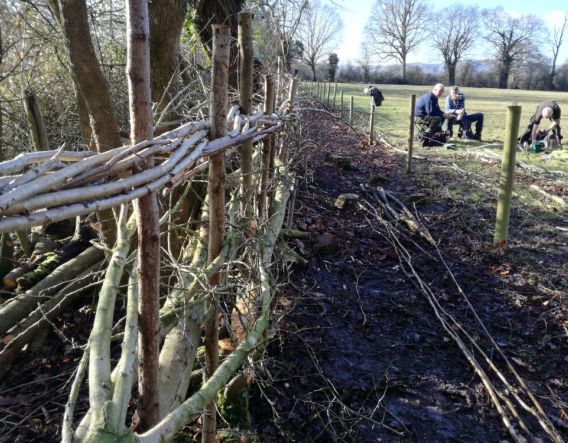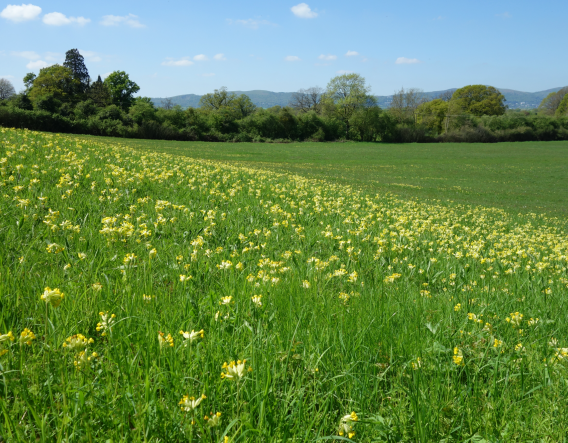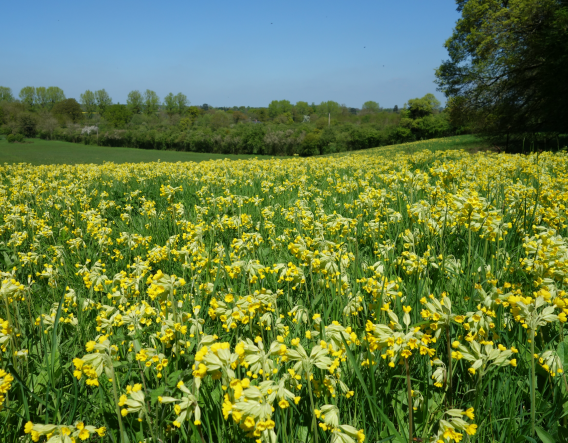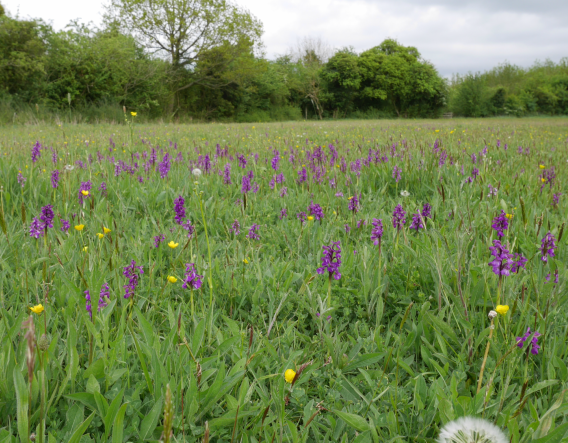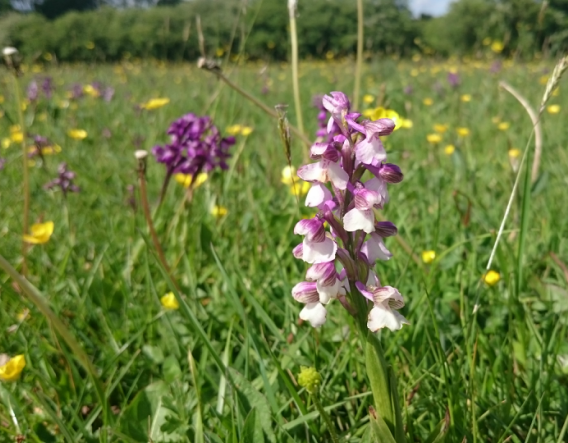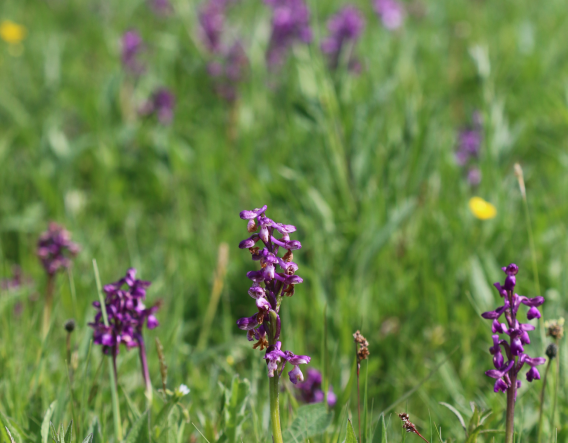Boynes Coppice and Meadows is a reserve owned by the Worcestershire Wildlife Trust. The reserve consists of an area of woodland and lowland meadow habitat. Lowland meadow is a habitat characterised by high species diversity with sites often playing host to numerous species of grass, wildflower, insects and birds. While lowland meadow habitat was once common in the UK it is now thought to cover less than 1,500 hectares, of which around 20 per cent is located in Worcestershire. This loss of coverage follows the decline of traditional farming practices in favour of intensive high productivity techniques.
Together with several nearby meadows, orchards and grassland sites owned by the Trust, Boynes Coppice and Meadows has been incorporated into a development nature reserve plan which takes into consideration the location of sites and links between them. By taking a more landscape centric approach to conservation and developing a network of linked sites the Trust hopes to better enable wildlife to adapt to and cope with the consequences of climate change.
| EB and Project Number | 113079/39 and 63 | LCF Funding | £51,800 |
| Project postcode | WR8 0SB | Total Project Cost | £61,800 |
| Object | DA |
LCF project objectives
Two projects were undertaken at Boynes Coppice and Meadows, the first to purchase the site itself and the second to repair damaged fencing which was hampering conservation efforts.
Project details and outcomes
Boynes Meadows were purchased by the Trust in 2014 for £60,000 using £50,000 of LCF monies. The meadows were adjacent to an existing reserve, Boynes Coppice, and while already rich in species diversity were still in need of restoration. Having purchased the meadows, the Trust set about implementing traditional hay meadow management techniques including an annual hay cut followed by livestock grazing to promote further colonisation of the site by the wildflower and grass species characteristic of lowland meadow habitat. While the techniques had the desired effect with the site improving in species diversity over subsequent years the Trust's efforts were hampered by old and damaged fencing which made controlling grazing difficult. To remedy the situation the Trust carried out a new project with LCF monies, from 2017 to 2018 to install new fencing which would enable better control of grazing.
Worcestershire Wildlife Trust's Conservation Officer David Molloy says - "The grazing of species rich grasslands with cattle and sheep is a really important part of the management of these scarce places. Livestock tend to eat the more vigorous and coarser grasses, which allows the more delicate plants and wildflowers to thrive, come late spring, meadows are awash with colour and buzzing with bees and butterflies. At our Eades Meadow National Nature Reserve, 40 species per square metre have been recorded; it's great to think that with sensitive management and the help that we've just received to install fencing and water supplies, Boynes and Nash's meadows may one day be just as rich in wildflowers."


